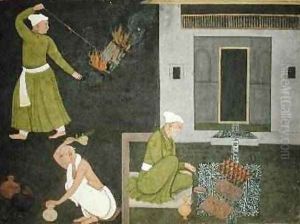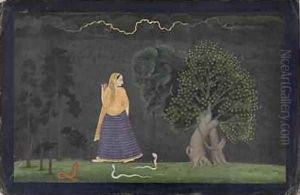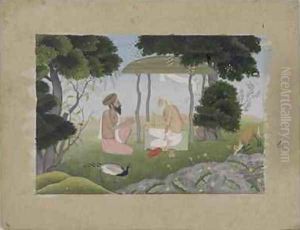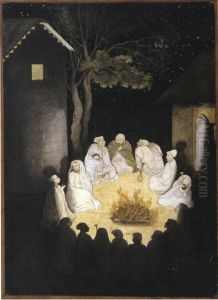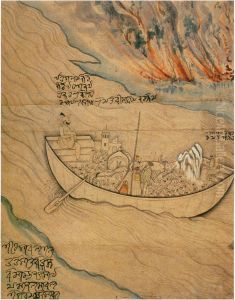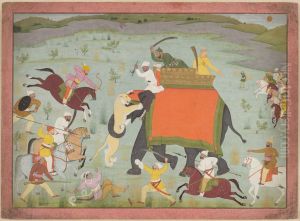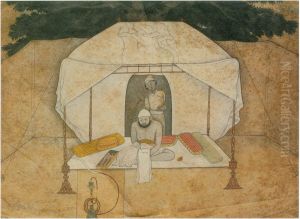Nainsukh Paintings
Nainsukh, a renowned Indian painter, was born in 1710 into a family of artists in Guler, a small pre-colonial Indian state in the Pahari region, which today lies in the modern state of Himachal Pradesh. He hailed from a lineage of court painters, which included his father, Pandit Seu, and his brother, Manaku. Nainsukh means 'delight of the eye', and true to his name, he became famous for his distinctive style and innovative artistic expressions that delight art connoisseurs to this day.
Nainsukh's work is a significant part of Pahari painting, a form of Indian miniature painting that flourished in the Himalayan foothills. After initial training under his father, he moved to the court of Raja Balwant Singh of Jasrota, where he produced some of his most acclaimed works. His paintings are characterized by their delicate naturalism, a departure from the prevailing Mughal influence, and a move towards a more personal and intimate portrayal of court life.
Nainsukh's work is particularly noted for its narrative quality and the detailed depiction of the daily life and pursuits of his patron, Raja Balwant Singh. His paintings often incorporate lush landscapes, architectural features, and a keen observation of people and their interactions. Unlike the formality of Mughal court paintings, Nainsukh's works convey a sense of warmth and accessibility, bringing the viewer into a more relatable and human world.
His legacy continued through his sons and other family members who carried on the tradition of Pahari painting. Nainsukh's influence persisted not only in the works of his direct descendants but also in the broader realm of Indian art, where his innovations would resonate for generations. His paintings are now part of the collections of various museums and have been studied extensively for their artistic and historical significance. Nainsukh passed away in 1778, having left behind a body of work that continues to be celebrated for its originality and charm.
